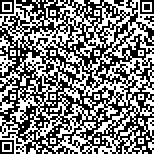| 引用本文: | 罗建宁, 朱忠发, 谢渊, 冯心涛, 叶和飞, 李永铁, 沈启明, 童箴言.羌塘盆地生物礁岩特征与沉积模式[J].沉积与特提斯地质,2004,(2):51-62.[点击复制] |
| | [点击复制] |
|
| |
|
|
| 本文已被:浏览 237次 下载 138次 |

码上扫一扫! |
| 羌塘盆地生物礁岩特征与沉积模式 |
| 罗建宁,朱忠发,谢渊,冯心涛,叶和飞,李永铁,沈启明,童箴言 |
|
|
(1. 成都地质矿产研究所, 四川 成都 610082;
2. 中国石油天然气总公司北京石油勘探开发研究院, 北京 100083) |
|
| 摘要: |
| 在三叠纪-白垩纪,特提斯海域内发育有大量的生物礁岩,羌塘盆地内亦广泛发育。生物礁沉积序列可划分为4类:(1)浅滩相生屑灰岩、核形石灰岩→生物礁岩→开阔台地相泥晶灰岩→斜坡相角砾岩;(2)开阔台地相灰岩→生物礁岩→局限台地相白云质灰岩;(3)浅滩相生屑灰岩→滨岸相碎屑岩;(4)潮坪相粉砂岩、泥灰岩→潮坪砂坝生屑灰岩→生物礁岩→潮坪砂坝生屑灰岩→潮坪相泥灰岩。生物礁岩可分为骨架岩、障积岩与粘结岩3种成因类型。成岩作用有重结晶、胶结、压实、压溶与破裂、溶蚀作用等。主要孔隙类型包括原生孔隙、裂隙与溶蚀孔、缝三类。晚三叠世造礁生物主要为珊瑚和藻类;中晚侏罗世以珊瑚礁与海绵礁为主。生物礁岩以海进体系为主,高位体系域也有发育,低位体系域中少见。可分为珊瑚礁、海绵礁、藻礁和层孔虫礁。南羌塘坳陷西部以珊瑚礁为主,东部以海绵礁为主;北羌塘坳陷西部为藻类珊瑚礁、层孔虫礁,台地内部有珊瑚礁、海绵礁。按古地理位置可分为台地边缘礁和台地内部礁,前者分布规模大,在地震剖面上也有明显的反映,有可能成为重要的油气储层。生物礁的发育状况受全球海平面升降所控制。 |
| 关键词: 羌塘盆地 生物礁岩 沉积模式 |
| DOI: |
| 附件 |
| 投稿时间:2004-04-27 |
| 基金项目: |
|
| The biohermites in the Qiangtang Basin and their sedimentary model |
| LUO Jian-ning, ZHU Zhong-fa, XIE Yuan, FENG Xin-tao, YE He-fei, LI Yong-tie, SHEN Qi-ming, TONG Zhen-yan |
(1. Chengdu Institute of Geology and Mineral Resources, Chengdu 610082, Sichuan, China;
2. Beijing Research Institute of Petroleum Exploration and Development, CNPC, Beijing 100083, China) |
| Abstract: |
| The biohermites were widespread within the Tethys Sea,and also in the Qiangtang Basin,during the Triassic to the Cretaceous. The depositional sequences of the biohermites may be classified into following categories:(1) shoal bioclastic limestone and oncolitic limestone → biohermite → open platform micritic limestone → slope breccias;(2) open platform limestone → biohermite → restricted platform dolomitic limestone;(3) shoal bioclastic limestone → littoral clastic rocks,and (4) tidal-flat siltstone and marl → tidal-flat bar bioclastic limestone → biohermite → tidal-flat bar bioclastic limestone → tidal-flat marl. The biohermites may be subdivided into three genetic types:framestone,bafflestone and bindstone. The diagenesis comprises recrystallization,cementation,compression,pressure solution,fragmentation and dissolution. The porosity types consist of primary,fractured,solution openings and fissures. The Late Triassic reef-building organisms are dominated by corals and algae,whereas the Middle and Upper Jurassic ones by coral reefs and sponge reefs. The biohermites occur mostly in the transgressive systems tract,occasionally in the highstand systems tract and rarely in the lowstand systems tract,and consist of coral reefs,sponge reefs,algal reefs and Stromatopora reefs. The coral reefs are observed in the western part of southern Qiangtang,the sponge reefs in eastern Qiangtang,the algal reefs and Stromatopora reefs in the western part of northern Qiangtang,and coral reefs and sponge reefs within the platform. The above-mentioned organic reefs may be discriminated,according to the palaeogeographic settings,into platform-margin and intraplatform reefs. The former occur on a wide range of scale,and may be noticed in seismic profiles. All the organic reefs outlined above are controlled by the global sea-level changes. |
| Key words: Qiangtang Basin biohermite sedimentary model |
|
|
|
|
|